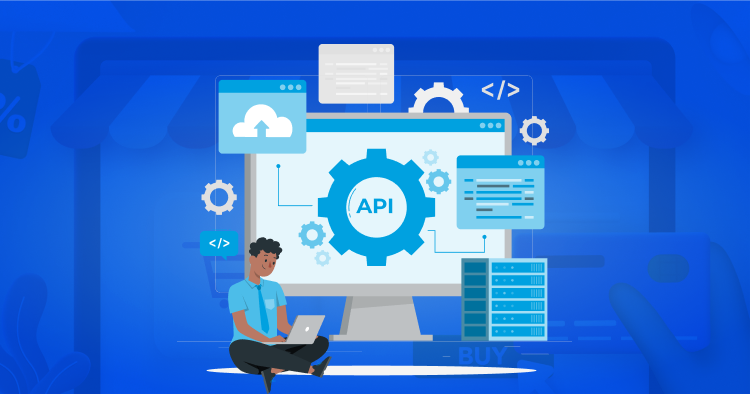Steps to Boost Your Salesforce Commerce Cloud Performance
You can use a variety of strategies to boost your Salesforce Commerce Cloud performance.
-
Performance of the Site
To evaluate the performance times of the artifacts that make up your site, use Code Profiler.
-
First-Page Optimization
A customer’s first page is the first page they see when they visit your website. Customers don’t usually go to the main page first.
A landing page is a page that a customer visits after clicking on a link from a search engine, a partner site, or an email.
A landing page is created specifically for a campaign, such as a product suggestion or an email blast.
-
Improve the general site pages
Any pages on your site that are not primary entry points for clients are considered general site pages.
-
Reduce the number and size of HTTP requests
The single most effective strategy for improving front-end speed is to make fewer HTTP queries that return less content. Sending an HTTP request takes at least 10 milliseconds, and returning the page takes even longer.
One of the most effective strategies to increase site speed is to reduce the number of HTTP requests you make.
-
Script Reduction and Reuse
Script used in your pages should be optimised.
-
URL and page size-reduction
Make the most of URLs and keep the page size down. The total size of the file of all the assets that must be uploaded for the page to operate is referred to as the page size.
The size of a page affects how quickly it loads in a browser, and it can have a big influence on mobile users.
-
Error 404 and 404 Pages
HTTP 404 error responses can be caused by missing pages, pictures, JavaScript, or CSS files on a website. You can use a link crawler to identify connection issues or missing pictures on any site page to fix these mistakes.
-
Coding Standards for Performance and Stability
Salesforce B2B Commerce integration systems are fast and dependable. Use B2B Commerce and Salesforce B2C Commerce to the best of its potential, and ensure your adaptations adhere to coding best practises.
Determine which designs are acceptable and will guarantee the scalability and resilience of your adaptations.
Questions about scaling commerce? Read this article Salesforce eCommerce integration to have a better understanding of the topic.
Challenges That Can Impact Performance Salesforce Commerce Cloud
Poor reporting involves focusing on one side of a story. That’s why we talk about Salesforce Commerce Cloud’s limitations and challenges, as well as how fantastic the eCommerce platform is.
So, for the sake of intellectual honesty and at the risk of appearing unbalanced, we’ve opted to tackle Salesforce Commerce Cloud’s difficulties all in one spot.
To put some context behind many of these, keep in mind that the eCommerce platform is quite powerful, and when used appropriately, it can wield great influence.
However, if it is handled carelessly — as an imperial Faberge egg is — the results could be costly.
-
Support Search
Salesforce users will tell you that finding the right help for a given problem can be challenging.
The standard Salesforce Commerce Cloud customer will be able to navigate the platform’s basics and find the platform’s main tasks and tools with ease.
However, unless they are a true jewel of a natural-born SFCC wizard, these same users will be unable to resolve major concerns.
The normal user, on the other hand, is unlikely to be, necessitating the assistance of expert developers with substantial training and experience in fixing platform flaws.
-
Change by chopping
The platform is designed to meet the needs of a vast number of different businesses. As a result, it has included features that reflect this. However, tailoring the platform to a company’s specific needs is difficult.
-
Loose keys
They, like the rest of the issues on this list, stem from a lack of understanding of the platform’s complete capabilities.
This is especially true when it comes to user permissions, with many organisations giving administrative access to employees who do not need it.
Simply put, properly configuring the necessary people and their unique access to certain places takes time.
-
Old data clog
Salesforce Commerce Cloud is a dynamic ecosystem with a lot of moving elements and data. There are no norms to follow in a lawless atmosphere, and pandemonium ensues.
Similarly, if it isn’t handled properly, the landscape will be littered with old and erroneous data.
Nothing is more frustrating than acquiring critical data, spending your most productive hours analysing it, and devising innovative solutions, only to discover that the data has been contaminated by a user who tampered with it unintentionally.
Any minor modification to the platform can cause the screen to display differently.
-
How many reports?
The influence on reports and dashboards is filtered from the preceding challenge. If the data is inaccurate or irrelevant, the reports that it generates are likewise useless.
Imagine having hundreds of reports stacked up if anyone can produce information and compose reports. Some will be incomplete, while others would be irrelevant.
This can lead to a lot of misinformation and mistrust about your reports.
-
Scale-up costs
Every platform must decide how it will make money. Some are free to join and offer premium services, while others need a large upfront payment.
Salesforce Commerce Cloud is a hybrid: you pay a one-time fee which is usually around $150,000 and then a percentage of your entire sales between 1-2 percent.
If your company makes $1 million in profit, you will pay $20,000 in taxes at a rate of 2%.
However, if profits reach $100 million, the platform will be paid $200,000. As a result, as your sales grow, so does the cost of Salesforce Commerce Cloud.
The quantity of funds you pay to the platform also matters. Scale costs change in both directions. Salesforce Commerce Cloud is only profitable if you use it.
These issues with Salesforce Commerce Cloud stem from the platform’s sheer breadth and capability, and they illustrate potential stumbling blocks while attempting to traverse the huge Salesforce Commerce Cloud environment.
Questions? Ask about Salesforce Commerce Cloud pricing, implementation, or anything else. Also, Read this Guide What Is Salesforce Commerce Cloud?
Optimization Tips That Can Boost and Improve Performance Salesforce Commerce Cloud
Site speed is always on the menu when discussing any site from a technical perspective. Google has emphasized the importance of factoring this into our basic thinking in recent years through numerous upgrades and messaging.
It’s a metric that many SEOs and marketers use because it can be quantifiable in a very rational manner, and changing things might have a positive or bad influence on these numbers, which can be measured using a variety of techniques.
Performance Salesforce Commerce Cloud Enhancement
As a result, blanket statements that some platforms(for example Bigcommerce Development Company or Woocommerce Design) are slow are not necessarily accurate. However, based on our examination of 1,926 Salesforce Commerce Cloud websites, we can safely conclude that Salesforce has a performance issue.
This data to us, and the sample size are adequate to conclude that performance Salesforce Commerce Cloud is slow.
So, what’s the solution?
Image Optimization
Although picture optimization isn’t unique to Salesforce websites, given how image-heavy corporate e-commerce sites are (and should be), even tiny image savings across big catalogue websites can add up to significant improvements to the performance Salesforce Commerce Cloud.
So, how can you optimise your photos to make Salesforce load faster?
As you may know, CDNs like Cloudflare have a grey cloud connection, which means you can’t rely on them directly for middle-level HTML/CSS/JS compression, although other media management services, like Cloudinary, offer SFCC connectors that can help.
Other typical image optimizations outside of integrations include:
-
- Using current formats such as WebP, despite the fact that none of the transformation URLs (as part of DIS) in the SFCC manual support WebP, I have yet to see it used on a Salesforce website.
- Lossless image compression while uploading.
- Images that load slowly and appear below the fold, particularly on lengthier product category listing pages.
Help Of DIS
The DIS, or Dynamic Imaging Service, is a feature of Salesforce Commerce Cloud that allows store owners to upload a single high-resolution picture file.
It also resizes the image according to the user’s preferences, eliminating the need to upload the same image in several scale formats.
From an optimization standpoint, if you’re uploading 6MB of multiple images to your Salesforce Commerce Cloud integration, there are larger issues and processes to address, and similarly, if photos take 28 seconds to load into the page, there are larger issues to address.
According to our experience, especially in terms of site speed, its competency is installation dependent, just like most Salesforce connections.
When it comes to speed performance, our developers are not fans of focusing on imaging scaling as a way to optimize images.
SFRA The Solution
The Storefront Reference Architecture -SFRA, is a user experience framework developed by Salesforce to enable storefront owners with a best-practice architecture reference for creating pages on the SFCC platform.
It integrates data objects, APIs, and third-party elements using pre-built widgets and integrations via the partner LINK program.
It’s a development of Demandware’s Site Genesis both 1.0 and 2.0 applications.
Can SFRA assist or hinder) the speed concern, just like Einstein is considered as a plus for shops, and uptake is aggressively encouraged?
The key business case for SFRA is to ease site development needs for front-end updates (the primary business case), not to improve page load speeds.
Because the integrations still include third-party technology and scripts on the website, this is the case.
However, SFRA can aid in the reduction of perceived mobile load times and server-side response time.
It is said to use an adaptive design approach rather than a responsive design strategy, which will improve page load times on smartphones depending on what is being loaded on them.
SFRA also includes a number of different pre-config integrations with both the Salesforce Commerce Cloud backend, which should operate faster than customized web integrations in principle.
So, can SFRA fix the problem of performance SalesforceCommerce Cloud? No, and depending on the quantity of third-party scripting and technologies provided via the builder, it may have a detrimental influence.
Lightning Experience By Salesforce
Salesforce introduced Lightning Experience in 2015 as an enhancement to its application development platform.
Lightning’s potential benefits for overcoming four prime causes why page-loading duration on your Salesforce Commerce Cloud Web app could be slow are highlighted in knowledge articles within Trailblazer.
- Geographical concerns
- Problems with devices.
- Browser problems
- Configuration difficulties with Commerce Cloud
Lightning Experience, like SFRA, can provide many benefits to a Salesforce website while also posing new performance problems.
According to Salesforce, the problem is as follows: ‘Using Lightning pages with complicated layouts, several components, or hundreds of fields. This type of page takes longer to process and render.’
To improve the performance of Salesforce Commerce Cloud by optimising Lightning components To improve the speed of your Commerce Cloud pages, you must:
- Following the guidelines for Visualforce implementation optimization.
- Review the page design and look for ways to simplify it.
- Check load speeds both with and without bespoke components. Look to see Whether they can be refactored as Lightning Actions or otherwise improved if they’re having a negative impact.
- Turn off Aura Debug mode.
You might also want to read: Benefits of using eCommerce Site Migration
Final Words
A lot of literature suggests and the available data demonstrates that deployments can vary greatly based on the performance of Salesforce Commerce Cloud initial technical scope and SEO QA criteria.
Contact Folio3, a Salesforce Commerce Cloud Development Company, if you’d like to know where your website stands in terms of site speed compared to other Salesforce Commerce Cloud websites.
We’ll tell you how quickly you have been compared to others and provide you with the best services as your personal Salesforce Commerce Cloud Consultants.








